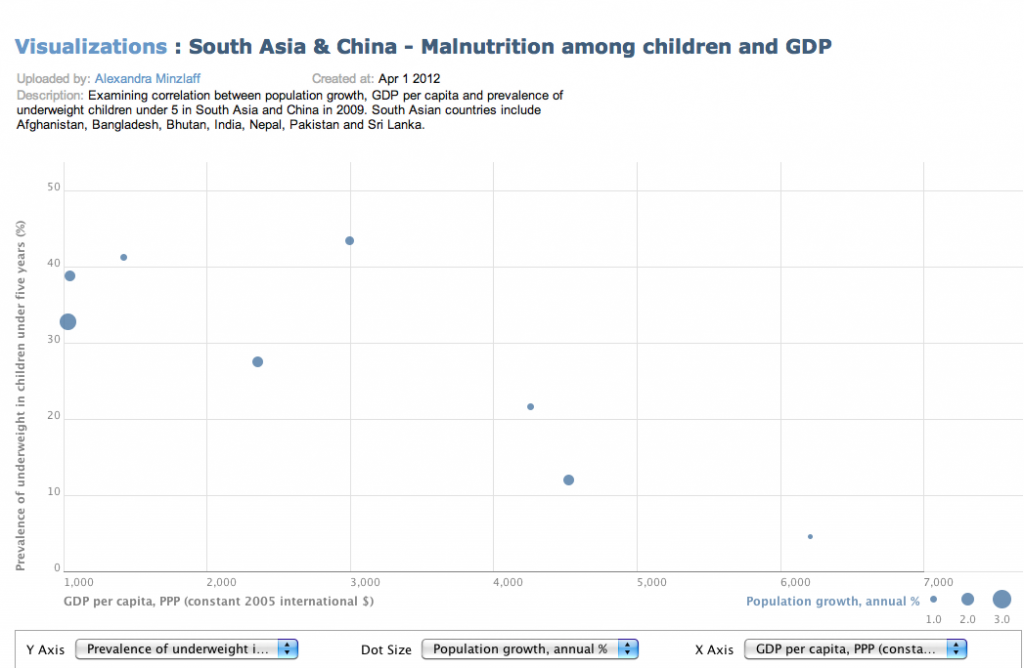David Rieff reports that 43 per cent of children are suffering from malnutrition in India.
Looking at country-wide data for India doesn’t easily explain why such high rates of child malnutrition exist in a booming economy.
Compared to neighbouring South Asian states and China, India does not follow the pattern of higher gross domestic product (GDP) per capita translating into lower rates of child malnutrition.

- Comparing rates of malnutrition to GDP per capita
The factor population growth plays into these findings in that lower population growth is related to lower rates of child malnutrition. This seems particularly true for China, a country with tough population limiting policies.
Although country-wide data does not seem to confirm that a growing economy helps lessen child malnutrition in India, state-level data does.
This map shows the percent of children five years old and under that are underweight in 30 Indian states. Madhya Pradesh at 60 per cent, Jharkhand at 56.5 per cent and Bihar at 55.9 per cent have the highest prevalence of underweight children.
When mapping net domestic product per capita by state, it becomes clear that there is a relationship between economic prosperity and rates of child malnutrition. Madhya Pradesh, Jharkhand and Bihar have the three highest rates of child malnutrition and are all in the bottom five in terms of state net domestic product (SNDP) per capita.
Although India is considered booming as a nation, there are clear regional pockets of prosperity which have lower child malnutrition rates – this can’t be accurately reflected when looking at the country as a whole.
Another factor that may influence child malnutrition is female empowerment.
This visualization examines the connection between malnutrition and female access to a bank accounts on a state level in India. It appears that the more access women in India have to bank accounts, the lower the malnutrition rates are. However, when adding SNDP per capita as a variable it becomes clear that the more wealthy a state is, the more female access to bank accounts there is. The direction and nature of the relationship isn’t clear – whether it means that higher income means greater female empowerment or simply that more income means more bank account access in general.
Overall, economic prosperity of a state appears to be the strongest indicator for child malnutrition rates – greater prosperity brings down the rate of child malnutrition.




